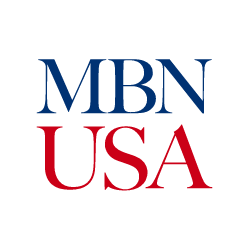This is an unprecedented commitment to meaningful action to reduce the racial and gender wealth gap in the United States. We acknowledge that the federal government is a critically important generator of opportunity and economic activity. With less than 10 percent of current federal agencies’ contracting going to small disadvantaged businesses, there is significant room for improvement and change.
NMSDC has been at the forefront of creating economic opportunities for communities of color for the past 50 years.
NMSDC certified minority-owned businesses generated $400 Billion annual economic output, created and sustained $2.2 million jobs.
As we begin to shape our next 50-year’s agenda of accelerating growth of minority-owned businesses, we are witnessing a truly remarkable moment in U.S. history, during which private and public enterprises are demonstrating an earnest commitment to inclusivity and diversity in the economy – from education initiatives to workforce development, hiring, contracting, and supporting entrepreneurship. Together, we can make significant progress in eliminating the racial wealth gap for the United States. By doing so, we will create a healthier, more productive, and competitive economy for all.
NMSDC looks forward to supporting the Administration’s efforts by serving as a reliable resource to minority-owned businesses to build their capacity for government contracts and enable access and connections to opportunities. We will also partner with federal agencies to conduct outreach to businesses, leverage our vast network, communicate programs and opportunities, provide learning solutions, technical assistance, and access to capital.
The federal government is the largest purchaser of goods and services in the world, buying everything from software and building construction to financial and asset management—making its procurement a powerful tool to advance equity and build wealth in underserved communities. Despite this, less than 10 percent of federal agencies’ total eligible contracting dollars typically go to small disadvantaged businesses (SDB), a category under federal law for which Black-owned, Latino-owned, and other minority-owned businesses are presumed to qualify. Moreover, while women own roughly 20 percent of all small businesses economy-wide, less than 5 percent of federal contracting dollars go to women-owned small businesses.
Increasing federal spending with underserved businesses not only helps more Americans realize their entrepreneurial dreams, but also narrows persistent wealth disparities. According to new analysis from the White House Council of Economic Advisers, based on data provided by the Small Business Administration (SBA), differences in business ownership account for 20 percent of the wealth gap between average white and Black households.
For this reason, at the June 1 centennial of the Tulsa Race Massacre, President Biden announced a bold new goal: increasing the share of contracts going to small disadvantaged businesses by 50 percent by 2025 – an unprecedented target projected to translate to an additional $100 billion to SDBs over 5 years. The announcement built on the President’s Day One Executive Order 13985, which directed agencies to work to make contracting opportunities more readily available to all eligible firms and to remove barriers faced by underserved individuals and communities.
In addition, on November 18, the Administration launched its President’s Management Agenda (PMA) Vision. The third PMA priority— managing the business of government to build back better—recognizes that fostering lasting improvements in the Federal acquisition system can create opportunities for underserved communities. The PMA Vision states, “By creating more opportunities for all types of businesses and underserved entrepreneurs to compete for Federal contracts, the Federal marketplace can serve as a platform to create a more equitable economy.”
Today, the Biden-Harris Administration is announcing a set of reforms to the federal procurement process to help meet the President’s ambitious target of increasing the share of federal contracts to SDBs, advance the President’s Management Agenda, and increase opportunity for all underserved businesses. Today’s actions include:
- For the first time, asking agencies to increase their goals so that governmentwide spending results in 11 percent of contracting dollars being awarded to small disadvantaged businesses, up from the current statutory goal of 5 percent. This is the first step towards meeting the President’s goal of ensuring that 15% of federal contracts go to SDBs by 2025.
- Releasing, for the first time, disaggregated data of federal contracting spend by race/ethnicity of business owner, a powerful transparency and management tool.
- Implementing major changes to the federal government’s use of “category management” to boost contracting opportunities for underserved small businesses.
- Increasing the number of new entrants to the Federal marketplace and reversing declines in the small business supplier base.
- Adopting key management practices to drive accountability and institutionalize achievement of small business contracting goals.
For the first time, asking agencies create ambitious goals in order to exceed the existing statutory goal of 5 percent by spending 11 percent of Fiscal Year 2022 governmentwide procurement dollars on small disadvantaged businesses. Small business contracting goals are a key element of our federal procurement system, driving priorities for nearly 40,000 federal contracting officers. Today’s action will put agencies on a path to meeting the President’s goal of increasing annual SDB spend from an average of 9.8 percent over the last 5 years to 15 percent by FY 2025. The reforms we are putting in place now will help ramp up the amount of money going to SDBs in the coming years and keep us on a path to meet the President’s goal of an additional $100 billion to SDBs over the next five years.
Over the course of the coming year, the federal government will also update goals for other “socioeconomic” categories of small businesses, including women-owned small businesses, service-disabled veteran owned small businesses, and HUBZone businesses.
Releasing, for the first time, disaggregated data of federal contracting spend by race/ethnicity of business owner, a powerful transparency and management tool. Today, the Administration is releasing, for the first time, disaggregated data of federal contracting spend by business owner race/ethnicity. For years, the federal government has relied on topline data to benchmark contracting spend to small businesses and socioeconomic small businesses. This data, while insightful, offers only a partial illustration of performance in reaching certain groups. For example, while we typically award roughly 10 percent of federal contracting dollars to SDBs, in FY 2020 just 1.7% went to Black-owned small businesses, 1.8%went to Hispanic-owned small businesses, and 2.8 % went to Asian American and Pacific Islander-owned small businesses. Similarly, high-level data obscures inequitable geographic distribution of federal contracts. Beginning with FY 2020 data, the federal government will publicly release this disaggregated data on an annual basis so that procurement officials, business owners, and the American people can use it as a tool to track equity and progress over time. This data will also allow agencies to assess their performance across industries and sectors, helping them better target interventions to areas with the greatest opportunity for growth.
Introducing major changes to the federal government’s use of “category management” to boost contracting opportunities for underserved small businesses. In recent years, the federal government has organized its buying practices for the majority of its contract spending using stewardship principles of “category management.” This process helps agencies buy as an organized entity, rather than as thousands of independent buyers, which allows agencies to make informed buying decisions and eliminate redundant buying choices. However, an analysis of category management spending since 2017 reveals that “socioeconomic firms, a group that includes SDBs, women-owned, service disabled veteran-owned, and HUBZones, have received a proportionally lower share of contracts. To address this unintended consequence and increase support for these businesses, the Office of Management and Budget (OMB) is issuing revised guidance on the use of category management to help federal agencies conduct more equitable buying practices. This guidance:
- Gives agencies automatic “credit” under category management for all awards made to socioeconomic small businesses, beginning in FY 2022.
- Reinforces the importance of small business goal achievement as a key to advancing equity in procurement, especially when coupled with category management stewardship practices.
- Ensures that use of “Best in Class” solutions is balanced with decentralized contracts and other strategies that are necessary to increase diversity within agency supplier bases.
- Strengthens the voice for small business equity considerations in category management governance by making the SBA and the Department of Commerce (parent agency of the Minority Business Development Agency) voting members of the Category Management Leadership Council, the interagency governing body for category management activities.
Adopting key management practices to drive accountability and institutionalize achievement of small business contracting goals. Advancing equity for socioeconomic businesses firms requires focused attention, proactive engagement, and execution by agency senior leadership. On Nov. 18, the Administration launched the President’s Management Agenda (PMA) Vision, which recognizes that fostering lasting improvements in the Federal acquisition system can create opportunities for underserved communities. Consistent with this vision, the federal government will:
- Hold leaders accountable for meeting small business contracting goals. OMB is directing all agencies to include progress towards achievement of each of the socioeconomic small business goals as evaluation criteria in all performance plans for Senior Executive Service (SES) managers that oversee the acquisition workforce or agency programs supported by contractors.
Federal Offices of Small and Disadvantaged Business Utilization (OSBDUs) play an important role by working with agency acquisition officials to increase contracting with small businesses; assisting small businesses in obtaining payments from an agency; and providing advice to agency senior leadership to expand access to the supplier base. OMB is directing all federal agencies to report to SBA and OMB their plans to ensure that OSBDUs have direct access to senior leadership.
- Ensure agency small business contracting offices have direct reporting lines to senior leadership. Federal Offices of Small and Disadvantaged Business Utilization (OSBDUs) play an important role by working with agency acquisition officials to increase contracting with small businesses; assisting small businesses in obtaining payments from an agency; and providing advice to agency senior leadership to expand access to the supplier base. OMB is directing all federal agencies to report to SBA and OMB their plans to ensure that OSBDUs have direct access to senior leadership.
Increasing the number of new entrants to the federal marketplace to reverse the decline in the small business supplier base. A recent report found that the number of new small business entrants to federal procurement decreased by 60 percent over the past decade. This trend is directly at odds with the Administration’s equity goals and not only means fewer growth opportunities for small businesses, but weakened diversity and resilience of the federal supplier base.
To reverse this trend, the Biden-Harris administration is tasking agencies with benchmarking the inclusion of new entrants in the federal marketplace and developing strategies for diversifying the small business supplier base. Agencies will work to increase transparency around future contracting opportunities to ensure that more small businesses have the opportunity to compete for them and enter the federal marketplace.





